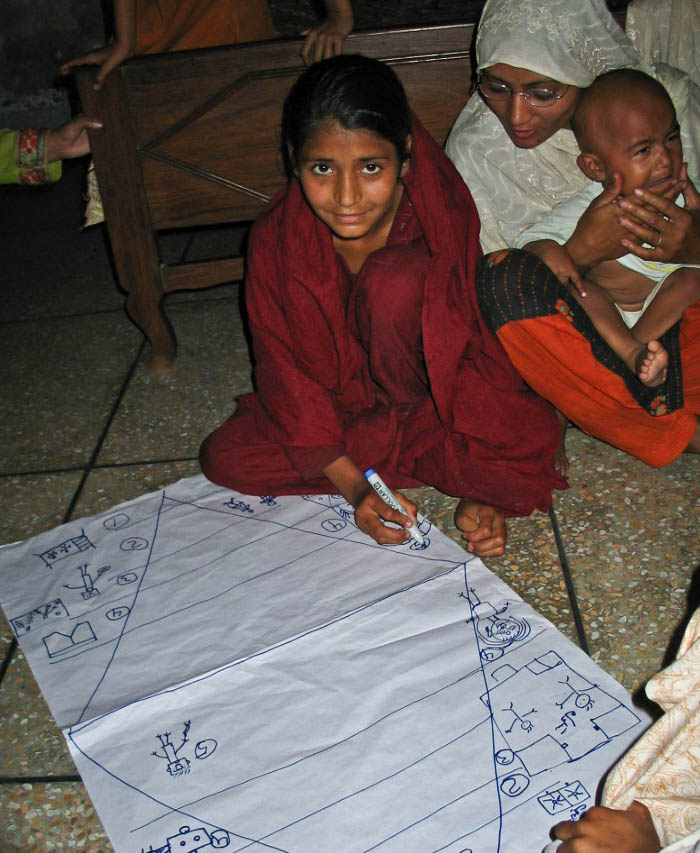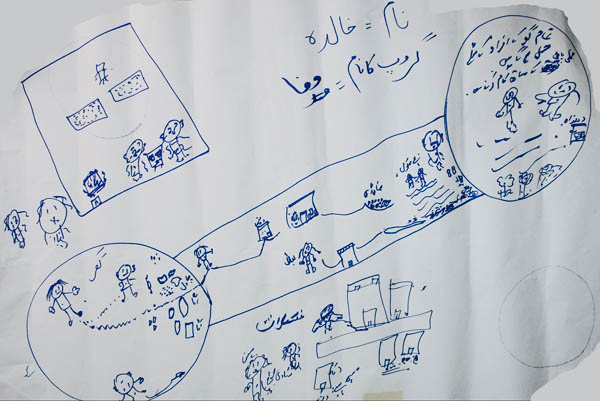The community empowerment drawings from Pakistan are by women and men clients and staff participating in gender workshops for micro-finance programmes 2004 – 2005.
Many of the drawings are in the form of ‘Diamond Tools’ that I developed for identifying community criteria for assessing empowerment, ‘happy families’ and differences between women and men’s poverty. The Diamond shape was chosen because if you just ask ‘what does poverty mean here’ people just say ‘everyone is poor’ or ‘has no power’. In order to tease things out I started to ask ‘what do the richest people look like?’ ‘what do the poorest people look like’, the Diamond shape representing that one might think those are the fewest people, with most people in the middle. If it turns out most people are at the bottom, then that is a discussion point. For full discussion of the Diamond tool and its various uses see post on my professional blog: https://gamechangenetwork.org/gamechange-methodology/diagram-tools/diamonds The other drawing is a very early ‘Road Journey’ showing progress over time from bottom left to top right.
These drawings were done before I had developed a systematic process for participatory drawing where everyone has time to reflect and draw for themselves, and then everyone shares and contributes their ideas. The artists are unknown, and also there is limited documentation on the drawing process from Kashf where staff conducted the workshops without me.
Findings and analysis
The same themes recur on most diagrams from different places, and also by men as well as women:
- Signs of empowerment and wealth are cars – sometimes driven by women or at least at women’s disposal with a driver, mobile phones for women and men, love, affection and respect between husband and wife. In one case also flying in an aeroplane for women. Men also identified being able to educate their daughters (learning to use a video camera and computer) and being able to go out freely with their wives to cinema and elsewhere as being part of a happy family life.
- Signs of disempowerment and poverty: violence by men and women (mother-in-law??), dirty unkempt hair and stress, too many unruly children, men’s drug addiction, sickness and lack of medical care. Where these are quantified based on assessment of their frequency in the community these issues affect at least two thirds of the population/micro-finance clients.
There are a wide range of styles of figure drawing, even on the same diagrams and using the same media – markers, biro or pencil:
- Some of the drawings have very expressive faces. Sometimes this is intentional – frowning, tears, smile. Other times this is from ‘happy accident’ where expressions are because of lack of drawing experience. But still relevant for my own adaptations either because they are so expressive or they make people laugh.
- Type of clothes are important markers eg between rich and poor. But significantly women are rarely drawn with veils either by men or women, even where they were in reality wearing full burqa.
Selection of key drawings

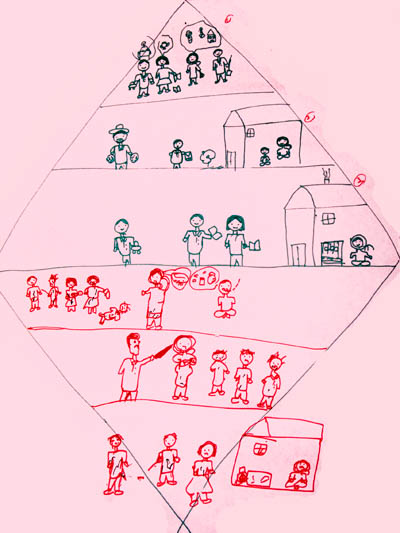






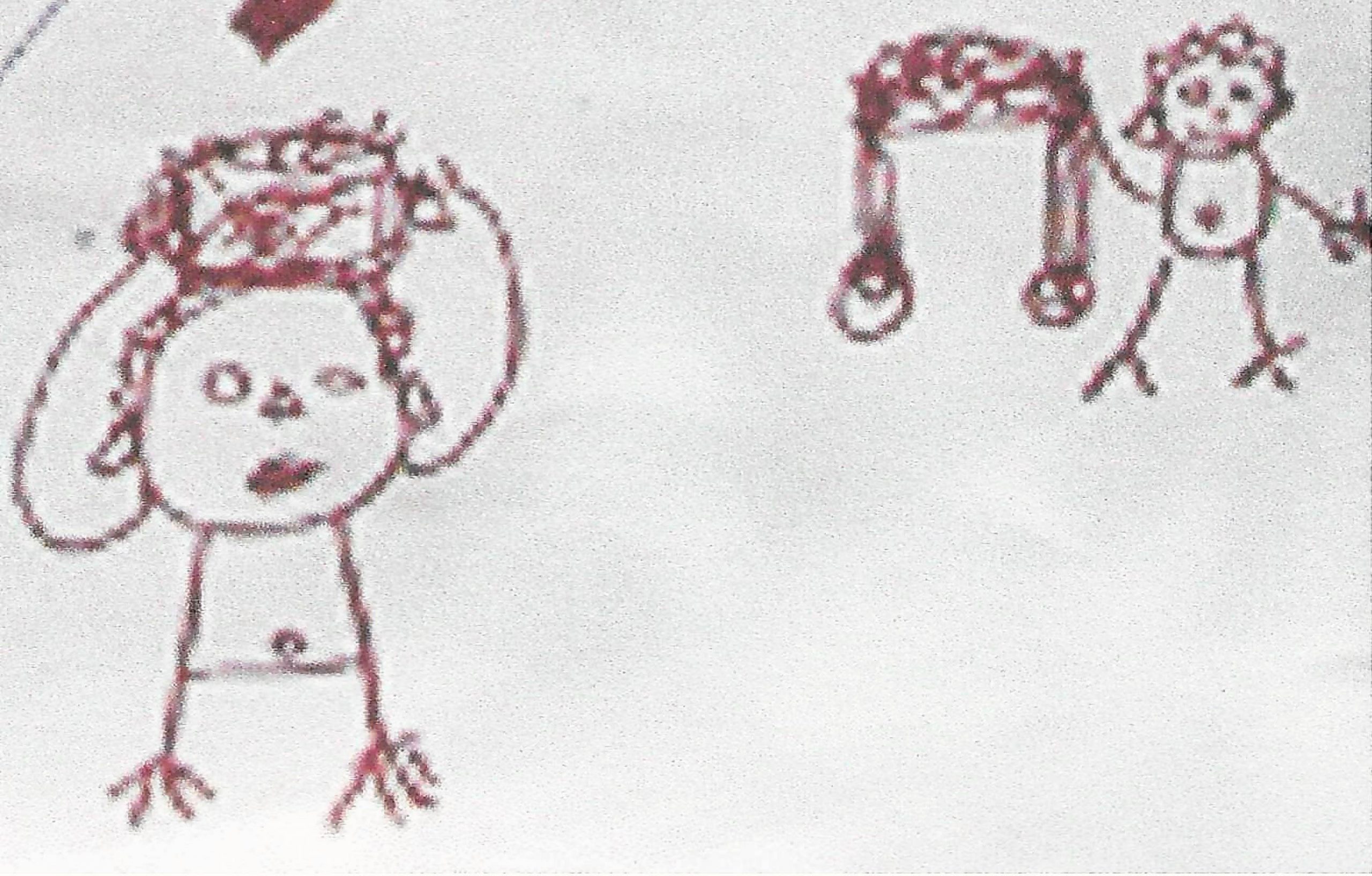




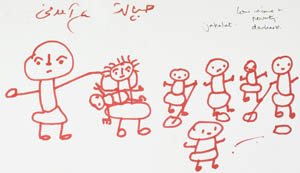
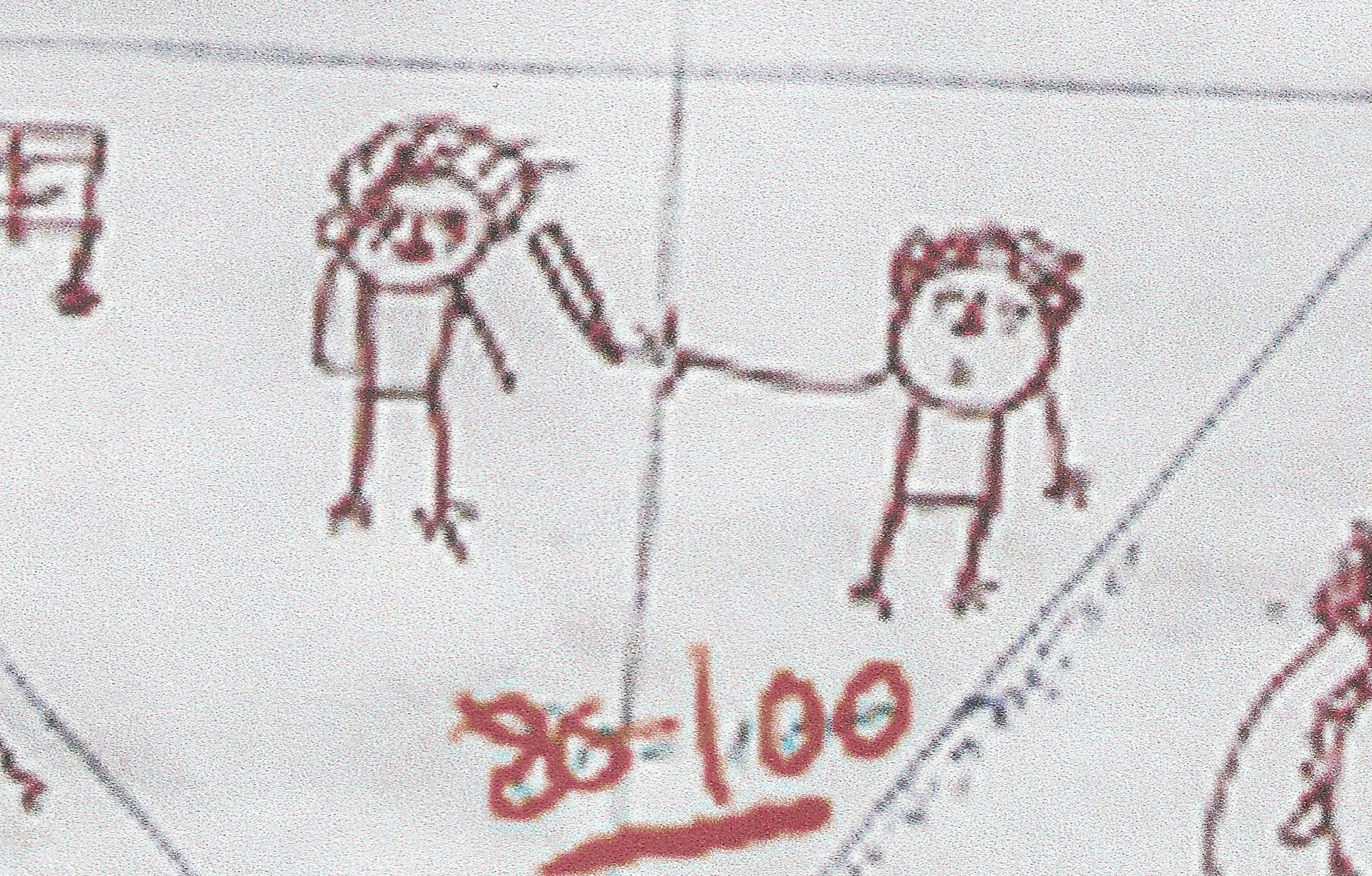

What happened to my airplane?’ story line ideas
In terms of storyline, the most poignant is the image of the woman lying dead in a cemetery with her children crying around her – so many women identified with that. Compared to the vision of flying in an aeroplane and the happy couple.
The animation could actually be quite simple. It could focus only on women, or more interestingly/accurately/less stereotypically include the visions and situation of men also expressed in Taraqee Foundation:
- Scene 1 Visions: A foreground drawing of a woman with (probably unkempt hair) with a series of flashed up dream bubbles of aeroplanes and happy family etc. This could also include men’s visions.
- Scene 2 Reality: A sequence of what actually occurred : violence, too many children etc. These could just be sequential still images. Or a series of very short 3-5 frame looped animations. This could also include men’s frustrations and the reasons for their descent into violence.
- Scene 3 Tragic Result: The final shot of the cemetery with the children animated then replicated to show the numbers of women in that situation. There could also be an image of a man distraught at what he had done.
Taraqee Foundation: Baluchistan
These drawings were from Taraqee Foundation in Baluchistan – a conservative rural area next to the Afghan border. This workshop in 2005 was facilitated and documented by me with Afghan refugees as well as local Baluchi women and men. I only have one photograph above because the women did not want to be photographed.
In this exercise I had done a bit of an experiment – women and men’s groups were in separate rooms and I asked some groups to draw ‘most empowered and least empowered woman’ and others ‘women and men in a very happy family/unhappy family’.
Interestingly the men in the women’s empowerment group walked out and left, but the men in the ‘happy family’ group were very interested saying they wanted their daughters to learn computing and video and they wanted to be able to take their wife out like they saw in the movies.
There were two groups of women one of Afghan women who were all wearing burqa and another Baluchi women who were not. It was the Afghan veiled women who were most firm that women should have their own name on everything.
Note the women in the pictures by women and also men are not shown as wearing heavy veil or burqa. They do not see themselves in that way.
Workshop Report
Kashf Foundation, Lahore



Kashf in Lahore – a more cosmopolitan urban area in workshops facilitated and documented by micro-finance staff initially trained by me in 2005. I was not present. The staff documentation was quite thorough, but I have a lot of questions I wish I had been able to ask.
In the second Diamond at the top were 2 women who had gone in an aeroplane and had a mobile phone to communicate regularly with their daughters.
The third Diamond in particular is very poignant.
- top left is a picture of an empowered woman and husband holding a flower with big lips out for kissing. The other top drawings have money for medicine, the husband has a job and the woman as well as the man has a car to drive. Only 1 member was in that position.
- at the bottom left by contrast is a woman lying dead in a cemetery with her children crying around her because she could not stand it any longer. The other symbols at the bottom are for violence, a child working in the market, injection needle for drugs, a bed for sickness and a woman carrying a heavy load to the market. 80-100 women in their near community were in that position. Many on the verge of suicide they said.
Further details can be found in the reports below.
Microfinance:
Kashf Foundation
Pakistan Contextual Research
Pakistan women’s movement
Poverty and housing
Domestic Violence
Pakistani Cinema: Bol
Bol (lit. Speak Up) is a 2011 Pakistani social drama film written, directed and produced by Shoaib Mansoor. It was part of a maternal and child health project, PAIMAN (Pakistan Initiative for Mothers and Newborns), advocating for women’s rights by bringing the focus of media and the elite of Pakistan to family planning and gender issues and implemented by The Johns Hopkins University Center for Communication Programs. Bol was a critically acclaimed and commercial success, and became one of the highest-earning Pakistani films of all time.
Set in Lahore, it tells the story of a conservative religious Muslim family facing financial difficulties caused by too many children and declining demand for the father’s traditional medicine services. The film starts by showing the protagonist, Zainab (Humaima Malick), about to be hanged for the murder of her father. She tells the story of her father’s violence and oppression to the media on the night of the hanging.

